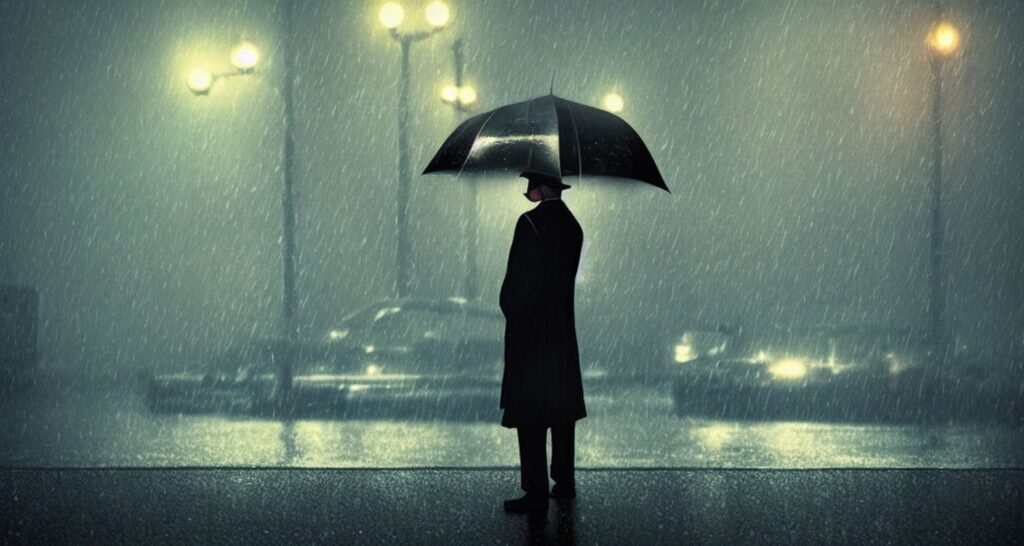
Foreshadowing is an important element of a successful story. It can draw the reader into the story and give a sense of suspense that will keep the pages turning. But how can you effectively foreshadow? Here are some tips.
1. use clues and symbols
2. be subtle
3. build tension
4. Don’t expose everything
5. Set a red trap.
If you follow these points, you will master the art of foreshadowing and write a story that engages the reader from beginning to end!
1. What is foreshadowing and why is it important in storytelling?
Foreshadowing is a narrative device used in storytelling to hint at events that may occur later in the story. By giving small clues or hints in the story, the author can build suspense and anticipation for future plot developments. This not only keeps the audience interested, but also makes it more satisfying when certain facts are revealed. Foreshadowing can take many forms. Some writers give subtle hints that all but the most attentive reader will miss, while others give unmistakable clues that make the reader anticipate what is to come. Whatever the method, foreshadowing is an important tool in creating an engaging story with unexpected twists and turns. Foreshadowing allows the reader to understand the long-term trajectory of the story while providing short-term surprises by giving out information in small increments. Ultimately, foreshadowing helps to create a textured story that keeps the reader guessing until the very end.
2. How can setting, dialogue, and characterization be used to foreshadow events that occur in the story?
Setting, dialogue, and character description can all play an important role in foreshadowing the events of a story. The setting of a story can provide clues to events that may follow. For example, a scene in an abandoned factory is likely to be followed by events involving characters in that factory. Conversations can also serve as foreshadowing. For example, if one character says, “A storm is coming and all hell is about to break loose,” that could be the catalyst for the climax of the story. Characterization is another form of foreshadowing. By introducing a villain with clearly evil ambitions, the reader may begin to prepare for a conflict between good and evil as he or she reads. Thus, setting, dialogue, and characterization are literary devices that maintain suspense and lead the story to its inevitable conclusion. These devices can also enrich the story by suggesting to the reader what lies ahead before the story unfolds. The successful use of these three elements allows the reader to enjoy a story that is full of tension. Foreshadowing, even when it is only implied rather than predicting the overall story, also serves to add depth to the reader and further increase the reader’s interest in the story. Ultimately, the successful use of setting, dialogue, and characters in a novel relies heavily on an understanding of how each part interacts with a particular environment or context within the story. Otherwise, it may go unnoticed by the audience or, worse, fail to elicit some emotion from them. By utilizing these tools, the writer can allude to future events without stating explicitly what will happen next, keeping the reader in suspense and eagerly anticipating what will happen next in the plot!
3. Give examples of how foreshadowing can be used to create suspense, tension, and surprise.
Foreshadowing is a powerful means of adding suspense, tension, and surprise to a story. It is the giving of clues to the reader as to what will happen next without explicitly stating what will happen. For example, if a character carries a box that looks important into the forest and places it near a certain tree, this may foreshadow the climax of the story in which the box will eventually be opened and its contents revealed. Furthermore, foreshadowing can also be used to suggest an important development or surprise in the story. A character might suggest that something unusual will happen if he or she stays in a certain place without warning that an earthquake or supernatural event will occur. Other foreshadowing can include changes in the tone of a character’s dialogue or changes in atmosphere due to music or lighting style. In any case, effective foreshadowing raises the reader’s sense of anticipation and subtly gives hints while muddling the uncertainties. This creates tension, suspense, and surprise, and draws the reader deeper into the world of the story.
4. Why is it important to have a balance of foreshadowing and surprise in a story?
Balancing foreshadowing and surprise in a story is one of the most important elements in creating an engaging narrative. Foreshadowing draws the reader into the story and keeps them guessing ahead of time, while surprises keep the reader on their toes and provide twists and turns. The successful use of these two elements creates a complex and unpredictable climax in which all of the foreshadowing scattered throughout the story pays off in a satisfying way. Too much foreshadowing will lead the reader to perceive all future tensions, resulting in a predictable and boring story with an unsatisfying ending. Conversely, if there is insufficient foreshadowing, the reader may lose investment in the story because important plot points are revealed without any buildup and no meaning is derived from them. Thus, striking a balance between foreshadowing and surprise is the key to creating an exciting story that holds the reader’s attention and captivates from beginning to end. Ultimately, this will increase involvement in the story and open up possibilities for interesting character development, unexpected twists and turns, and other techniques that will keep the reader seeking further storytelling goodness.
5. how can too much or too little foreshadowing ruin a story?
Foreshadowing is an important tool for writers, giving readers hints of future plots and helping to build suspense as the story progresses. Too much foreshadowing, however, can cause a carefully constructed story to become predictable and one-dimensional. Inadequate foreshadowing, on the other hand, can have a similarly negative effect. Without at least a hint here and there, the reader is unable to connect the dots between important plot points, leading to confusion and frustration with events that come suddenly. Writing a story that engages the reader requires a delicate balance between hinting and surprising. For this reason, it is important that foreshadowing not be overly biased one way or the other. By doing so, readers will remain interested until the end of the story and will be able to reach a satisfying conclusion.
6. What are some of the mistakes writers tend to make when using foreshadowing in their stories?
There are several mistakes writers tend to make when using foreshadowing. The most common mistake would be to use too much foreshadowing. When introducing an element of mystery that is seemingly unrelated to the story, the writer should not provide another unrelated detail right after it because it will confuse the reader. Other mistakes include setting expectations too early or revealing in dialogue important details that should be discovered through subtle clues to build suspense. In addition, sometimes ambiguous expressions are attempted to be used as foreshadowing, which in turn annoys the reader. Such expressions should be consistent with the characters’ attitudes and environment, or suggest events that have already occurred or have yet to occur. Finally, the writer should not allow foreshadowing to overwhelm or hinder the narrative thrust of the work. Foreshadowing is only one of many elements that move the story forward. However, when used correctly and carefully, foreshadowing can be an effective tool to create a suspenseful adventure for the reader.
Conclusion
Foreshadowing is an important tool for writers because it can hint at events that will occur later in the story. This allows readers to feel suspense, tension, and surprise, and keeps them reading until the end. The balance between foreshadowing and surprise is essential to a well-written story, but too much or too little foreshadowing is half as effective. Writers should be careful not to use this technique too much, as readers will become bored and stop paying attention. Thus, good use of foreshadowing can make a story more interesting.






